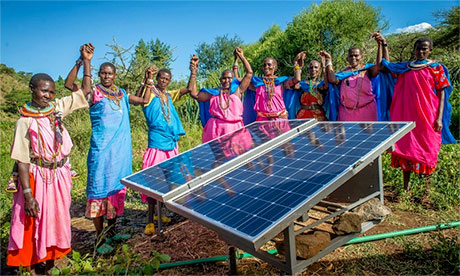For a long time polar bears were the poster child of climate change but that is no longer the case.
Now it is an image of our fellow human beings, millions of them, battling on the frontlines for survival.
While the west debate the merits of climate science, in large parts of Africa, Asia and the Pacific Islands climate change is a daily reality.
Many of these communities rely on fishing and farming for their subsistence — but unpredictable weather and extreme weather events are wreaking havoc.
This is especially true of East Africa where I have just returned from visiting communities on the brink of famine.
Over 20 million people throughout the region are facing what the UN has characterised as the greatest humanitarian crisis since the Second World War. Everything I saw confirmed this assessment.
Widespread malnutrition and in many cases starvation, is sweeping through Somalia, Ethiopia, Nigeria, Kenya, South Sudan, Malawi and Yemen.
The crisis is being fuelled by conflict in certain areas while rising food prices and a large scale drought are affecting the region as a whole.
In 2016 East Africa was hit by a supercharged El Niño — a warming of temperatures on the surface of the Pacific Ocean.
While dry spells are not uncommon for the region, abnormally high temperatures have intensified both the severity and the length of the drought.
For farming and pastoralist communities the effects have been devastating.
With over 30 years of involvement in global affairs, I have never seen anything on this scale.
Millions of men, women and children are, literally, desperate for food and water.
Released just last month, the Disaster Alley report warns that, if left unchecked, global warming will cause increasingly regular and severe humanitarian crises not unlike the one taking hold in East Africa.
Images of droughts, famines, and mass migration are what we must now conjure up when thinking about climate change.
But all is not lost. Continue reading
- Image: Eureka St
News category: Features.




